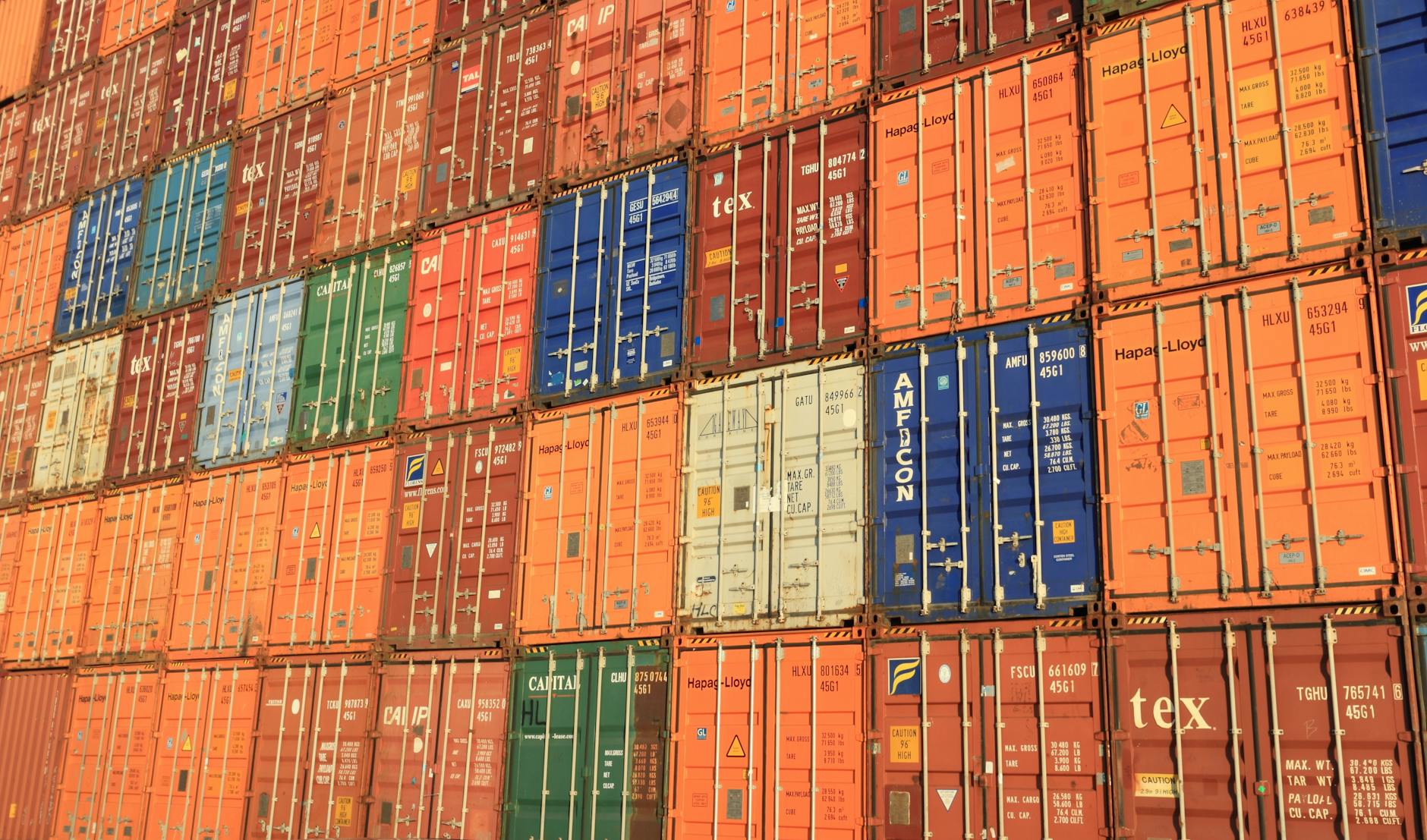Why Sustainable Warehousing is Transforming Business in Australia

Foundations of Sustainable Warehousing
Sustainable warehousing marks a transformative phase in Australian business practices. The focus is on more eco-friendly approaches, aligning with Melbourne's commitment to conservation, as seen in initiatives at the Melbourne Zoo's conservation programs. The key elements of this sustainability include efficient energy use, waste reduction, and eco-conscious transport solutions. By employing sustainable practices, businesses can significantly reduce their carbon footprint and foster a healthier planet for future generations.
Environmental impact is a pivotal aspect of sustainable warehousing. By prioritising energy-efficient practices and utilising renewable resources, such as solar power, warehouses can drastically cut emissions. High-efficiency lighting and climate control systems play a substantial role, along with conscientiously managing waste through recycling programs. Moreover, aligning order fulfilment processes to minimise emissions during transport from a 3pl warehouse is essential.
For Australian businesses, embracing sustainability offers numerous benefits. Cost efficiency is one, as energy-saving measures reduce reliance on fossil fuels, which lowers operational costs over time. Notably, there is also a substantial enhancement in brand perception as consumers increasingly prefer companies that prioritise the environment. This shift aids brands in standing out within the competitive market and bolsters overall profitability.
By implementing sustainable warehousing practices in a manner akin to the eco-friendly efforts at CERES Community Environment Park, businesses can further connect with the environmentally conscious ethos prevalent in Melbourne. This holistic approach not only benefits the environment but also amplifies brand reputation and loyalty.
Innovative Practices and Technologies
Eco-Friendly Materials
As I navigate the exciting realm of sustainable practices, embracing eco-friendly materials is a prominent step for any business. Imagine utilising biodegradable packing peanuts instead of styrofoam—it’s a simple yet significant shift. Similarly, transforming traditional cardboard boxes into recycled options benefits not just the environment but also resonates well with eco-conscious consumers. Such materials play a crucial role in enhancing the sustainability of supply chains, reducing the carbon footprint, and promoting ethical sensibilities in packaging. Drawing inspiration from Melbourne Zoo's conservation programs, it is clear that integrating eco-friendly packaging can lead to stories of sustainable success.
Renewable Energy Usage
Embracing renewable energy solutions in warehousing can be a game changer. The renewable energy displays at Scienceworks offer insight into how solar panels and wind turbines can be effectively used to power warehouses. Harnessing these energy sources not only reduces a company’s environmental impact but also significantly cuts utility costs in the long run. More businesses are realising the potential of green energy, which can help foster a cleaner, more sustainable operational model. In this transition toward greater efficiency, commitment to renewable energy stands out as both an eco-friendly and economically wise choice.
Smart Logistics Systems
Leveraging smart logistics systems like third party logistics can streamline operations and boost sustainability efforts. By optimizing routes and utilizing advanced tracking technologies, 3PL providers help reduce fuel consumption and emissions. For businesses looking to enhance their environmental credentials, these solutions are invaluable. My journey towards sustainable warehousing includes smart logistics systems, which simplify complex processes, minimise waste, and ultimately lead to a more efficient and sustainable logistics network. The efficiency of 3pl solutions underscores their importance in crafting an eco-friendly and responsible business strategy.
Integration with Business Operations
Aligning with Marketing Objectives
Embarking on a sustainable journey requires alignment between marketing and logistics, especially when working with 3pl logistics. It's crucial to ensure a harmonious relationship where your eco-centric values aren't diluted. As I experienced through the Melbourne Zoo's conservation programs, sustainability isn't just about reducing carbon footprints but enhancing brand values. A seamless integration can amplify your message, ensuring your customers feel the sincerity behind every campaign.
Enhancing Supply Chain Efficiency
For those diving into the world of sustainable supply chains, efficiency plays a pivotal role. The blend between effective pick and pack solutions and eco-friendly practices is reminiscent of innovations at the CERES Community Environment Park. By optimising processes to cut down on waste and energy, businesses can witness tangible improvements in speed and resource conservation. This not only cuts operational costs but reinforces a commitment to sustainable growth.
Impact on Customer Satisfaction
A sustainable approach has profound implications for customer satisfaction. The experience is like seeing renewable energy displays at Scienceworks; it's tangible proof of a commitment to better choices. When customers see brands prioritising eco-friendly logistics, it builds trust and loyalty. It's about making them feel they're a part of the solution. Your audience should leave each interaction feeling empowered by their choice to support your brand.
Overcoming Implementation Challenges
Addressing Workforce Training
Integrating sustainable practices into warehousing requires a proactive approach to workforce training. Employees need to become adept at practices like pick packing, which improves efficiency and minimizes waste. Training sessions can inspire and empower staff to align with eco-friendly goals, drawing inspiration from the eco-friendly innovations at CERES Community Environment Park. By highlighting real-life stories of sustainable success within their industry, businesses can foster a culture that prioritizes environmental responsibility.
Navigating Regulatory Requirements
Adhering to regulatory requirements is essential when transitioning to sustainable warehousing. This can involve understanding local environmental laws and adapting logistics operations accordingly. In bustling hubs like warehousing sydney, businesses must remain compliant with stringent regulations that govern their operations. Keeping abreast of regulatory changes ensures a smoother adoption of sustainable methods and reduces potential legal risks.
Handling Supply Chain Disruptions
Supply chain disruptions pose significant challenges, but a sustainable strategy can mitigate these issues. Developing a robust, flexible supply chain allows businesses to adapt to unexpected changes quickly. Diversifying suppliers and employing smart logistics solutions can help maintain consistent operations even when faced with disruptions. Sharing stories of resilience and agile adaptation in supply chains can empower others in the industry to adopt similar approaches.
Common Pitfalls to Avoid for a Sustainable Future
Long-Term Strategies
Ignoring long-term strategies in sustainable warehousing is a mistake that could jeopardise not just the future of your business, but also the planet. I've seen many companies start with enthusiasm, only to falter when facing complex, long-term planning. Consider the Melbourne Zoo's conservation programs, which illustrate the importance of patient, enduring efforts to safeguard biodiversity. Warehousing isn't immune to these demands for sustainability; every decision you make must take a holistic view, aligning immediate actions with broader ecological goals.
Cost Implications
One of the most common misconceptions is underestimating the cost implications of sustainable initiatives. While the initial investment might seem daunting, the benefits, both ecological and financial, are undeniably transformative. A visit to CERES Community Environment Park showcases how investing in eco-friendly technologies leads to long-term savings and environmental benefits. For instance, choosing energy-efficient lighting or engineered wood products can yield returns far greater than their upfront cost. It's about seeing beyond the price tag to the expansive vision of reduced waste and operational savings.
Supplier Alignment
A crucial oversight in sustainable warehousing is overlooking supplier alignment. Sustainable success isn't achieved in isolation; it requires a network of partners committed to the same goals. I think about the renewable energy displays at Scienceworks. They underscore how critical it is for every link in the supply chain to share a unified approach. I've learned that establishing solid relationships with suppliers that have a proven track record in sustainability ensures continuous improvement and mitigates the risk of supply chain disruptions. Each step reaffirms your commitment and assures your consumers that your eco-conscious promises aren’t mere rhetoric.


